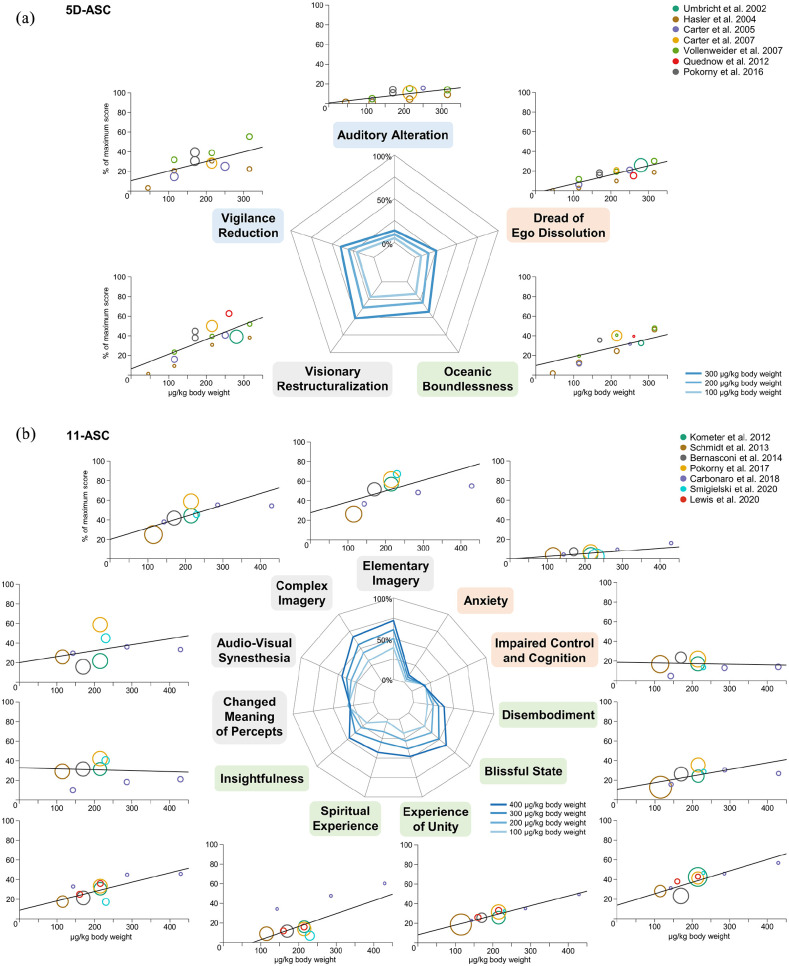Figure 1.
Dose–response relationships for the Altered States of Consciousness Rating Scale.
(a) Dose-specific subjective effects of psilocybin measured with the Altered States of Consciousness Rating Scale. The data of this instrument can be analysed according to a schema where items are organized into five factors, called ‘dimensions’ of ASC experiences (5D-ASC). (b) A finer-grained quantification of specific aspects of subjective experiences is obtained when the questionnaire is analysed according to the 11-factors schema. These 11 factors can be considered subscales of the three core dimensions of the 5D-ASC, namely Oceanic Boundlessness, Dread of Ego Dissolution and Visionary Restructuralization (see corresponding colours of the subscale names). Doses are given in microgram per kilogram body weight; effects are given as the percentage score of the maximum score on each factor (questionnaire items are anchored by 0% for ‘No, not more than usual’ and 100% for ‘Yes, much more than usual’). Circle colour indicates data from the same sample of participants (the same colour corresponds to statistically dependent data), while circle size represents the weight of the data based on study variance (see Methods). Spiderplots present the estimated dose–responses for 100–300 μg/kg body weight on the 5D-ASC and 100–400 μg/kg body weight on the 11 subscales, corresponding to the range of doses that were included in the respective analyses. The colour of individual scales corresponds to the primary dimensions and the respective subscales.

